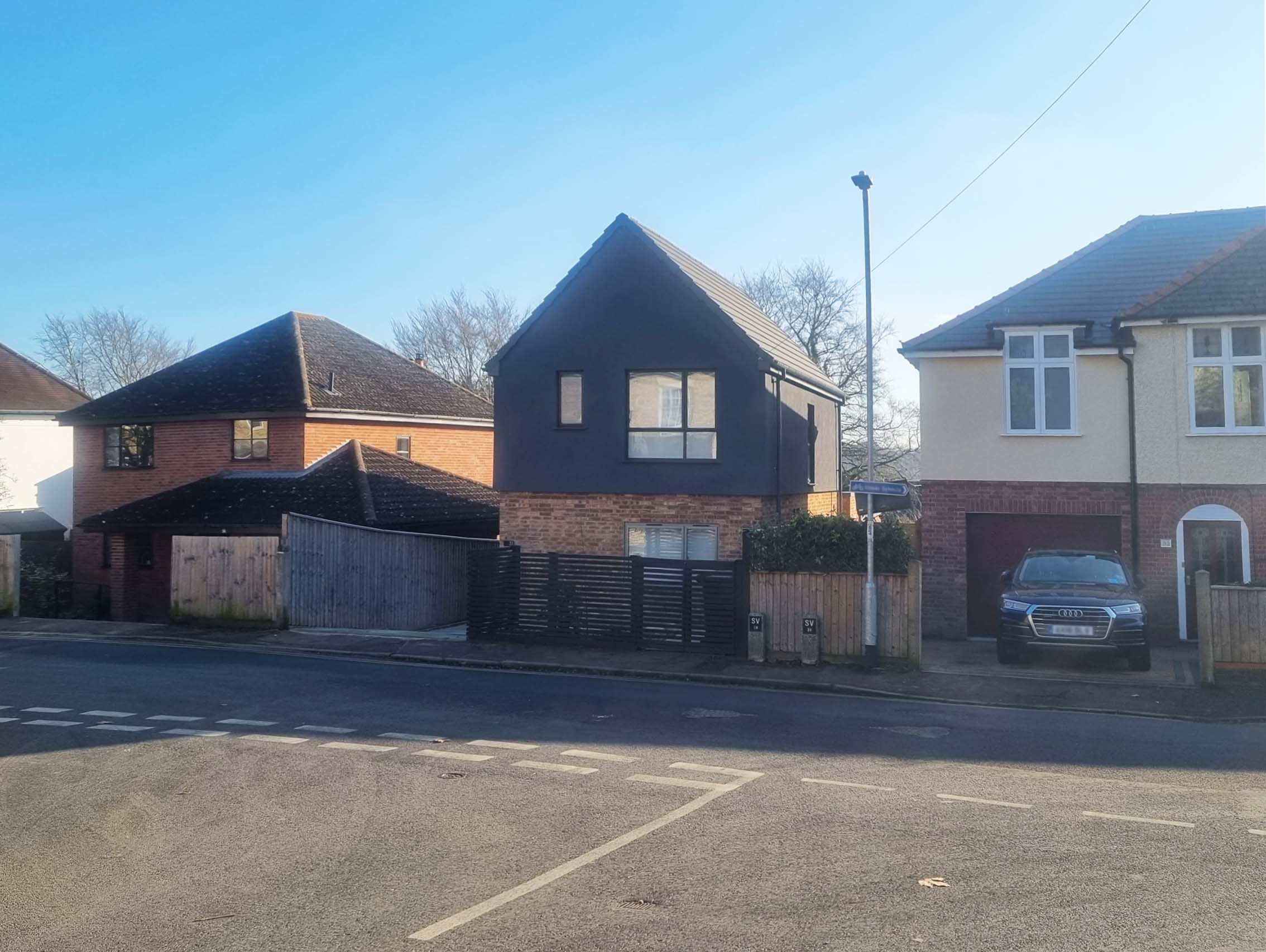Retro First is Not Easy
Our nearly new house in Bury St Edmunds
We took this project in Bury St Edmunds on as our second in-house mini-development project. We were sure that, one way or another we would be able to add value to the site and make a good building out of it. Having initially come to the conclusion that the only way to develop the site would be to demolish the existing house, encouragement to change tack and work with what was there came from some interesting decision making processes.
About the project
The existing building is located on a narrow plot on a residential street in Bury St Edmunds, Suffolk. It is a small three bedroom detached house with split-levels on both of its two floors. The building is not pretty and the layout is difficult. Seen from the street, it looks like a not-too-distant cousin of an electricity sub-station.
Had demolition been considered?
After originally thinking of the project as an exercise in refurbishment and extension, we started to think that with the substantial VAT savings offered by the demolish and new build option, it would be more cost effective to go down that route and build something bigger, better and more efficient.
The design followed original building footprint but with a large ground-hugging, stepped extension to the rear.
We felt from the start that a solid, heavy structure at ground floor with a lighter, separated shed like structure at first floor level would work well on this site: It seemed to work with the sloped terrain and with the narrow street frontage between two very British domestic properties.
We developed the design and met on site with our preferred builder to discuss costs and construction methods. During the meeting it became clear that we needed to re-think the scheme and consider going back to the idea of re-furbishing and extending the original building rather than demolishing and re-building.
Lessons learnt - Collaborating to design out uncertainty
During the discussions with the contractor we found that the narrow site frontage and restricted access on the site meant that it would be necessary to keep transport of materials off and on site to a minimum. Demolishing the existing building and digging out all of the old foundations was going to create a huge amount of waste to be taken off site – as well as more new materials being needed to be brought back onto the site.
Perhaps more importantly, we found that by leaving the existing foundations in place, we were taking out the major early-stage cost uncertainties that exist with most groundwork operations.
